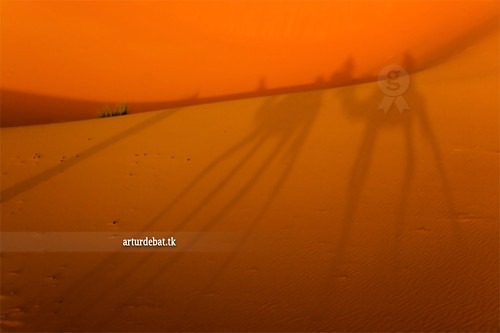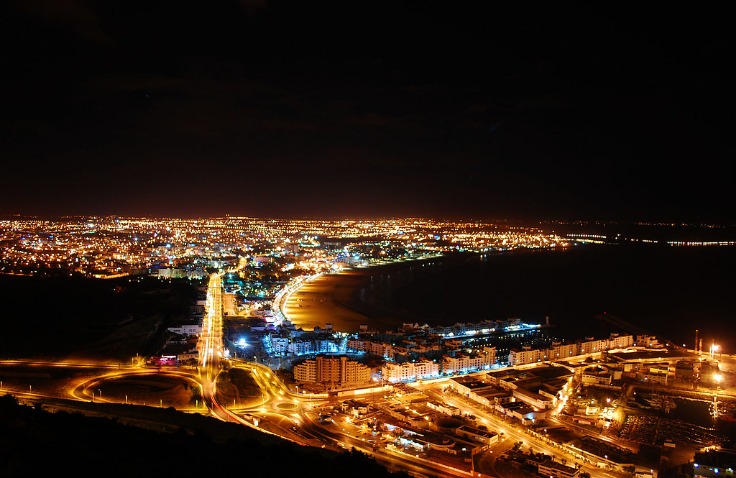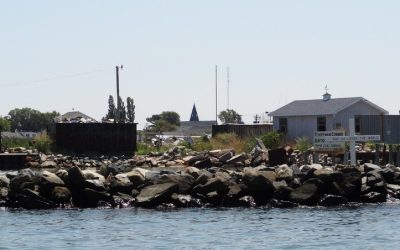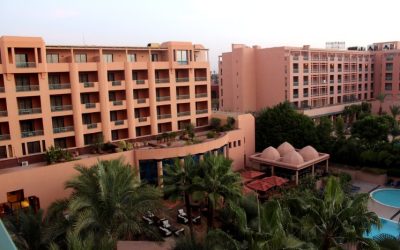Geography and Location of Agadir
Agadir is a vibrant coastal city located in the southern part of Morocco. Nestled along the Atlantic Ocean, it is known for its beautiful beaches, warm climate, and strategic position. Situated near the foothills of the Atlas Mountains, Agadir serves as a major economic and tourism hub in the region. Its prime location makes it an important gateway for visitors exploring southern Morocco and the nearby Sahara Desert.
Geographical Coordinates and Topography
Agadir is a prominent city located along the southwestern coast of Morocco, situated on the shores of the Atlantic Ocean. It is renowned for its vibrant port, beautiful beaches, and favorable climate, making it a popular destination for both tourists and traders.
The geographical coordinates of Agadir are approximately 30.4278° North latitude and 9.5981° West longitude. This positioning places the city within the Souss-Massa region, contributing to its strategic importance in maritime and economic activities.
Topographically, Agadir features a relatively flat coastal plain that extends from the shoreline inland, gradually rising toward the Anti-Atlas Mountains in the background. The city’s landscape is characterized by sandy beaches, extensive plains, and low hills, providing a scenic backdrop that enhances its appeal as a seaside resort and commercial hub.
Proximity to Major Cities and Landmarks
Agadir is a prominent city located along the southwestern coast of Morocco, renowned for its beautiful beaches and vibrant port. Situated on the Atlantic Ocean, it serves as a key economic and tourist hub in the region. The city is positioned near the foothills of the Atlas Mountains, providing a stunning backdrop to its modern skyline and coastal landscape. Agadir is approximately 235 kilometers southwest of Marrakech, making it easily accessible for travelers exploring southern Morocco. It is also close to other major cities such as Essaouira to the north, which is known for its historic medina and fishing port. Landmark attractions near Agadir include the Souss-Massa National Park and the ancient Kasbah of Agadir Oufella, offering both natural beauty and historical insights. Its strategic location enhances its role as a gateway to the southern Moroccan region and its attractions.
Climate and Weather Patterns
Agadir, located along the Atlantic coast of Morocco, is a prominent city known for its strategic position and attractive coastal scenery. Situated in the Souss-Massa region, it enjoys a prime placement between the mountains of the Anti-Atlas and the Atlantic Ocean, making it a vital port and tourist destination. The city’s geographic setting offers a unique blend of oceanic and mountainous landscapes, contributing to its vibrant local culture and economic activities.
The climate of Agadir is characterized by a semi-arid Mediterranean pattern, with mild, wet winters and hot, dry summers. Due to its coastal location, the city benefits from moderate temperatures year-round, with average highs reaching around 24°C (75°F) in winter and soaring to about 30°C (86°F) or higher during summer months. The city experiences relatively low annual rainfall, mostly occurring between November and February, which supports its lush agricultural areas. Gentle ocean breezes help regulate the heat, creating a comfortable environment for residents and visitors alike.
Historical Background of Agadir
Agadir, a vibrant city located on the southwestern coast of Morocco, boasts a rich historical background shaped by centuries of cultural exchange and resilience. Originally founded as a small fishing village, Agadir experienced significant transformation over the years, especially after a devastating earthquake in 1960 that led to extensive rebuilding efforts. Its strategic position along Atlantic trade routes and its role as a vital port have contributed to its historical importance, blending traditional Berber culture with modern development. Today, Agadir stands as a symbol of resilience and growth, reflecting its dynamic history and evolving identity.
Ancient Roots and Early Settlements
Agadir, a prominent city in Morocco, boasts a rich historical background rooted in ancient civilizations and early settlements. Its strategic location along the Atlantic coast has contributed to its development over centuries, serving as a vital trade hub and cultural center.
The origins of Agadir date back to ancient times, with evidence suggesting human activity in the region dating as far back as the Phoenician and Roman periods. Early settlements were established by Berber tribes, who utilized the area’s natural resources for fishing, agriculture, and trade. The fertile plains surrounding Agadir supported these communities and facilitated their growth.
Throughout history, Agadir has undergone various transformations influenced by different civilizations. The city became part of the Berber kingdoms and later came under Islamic influence with the Arab conquests. Its port became a key site for commerce between Africa and Europe, fostering cultural exchanges and economic development.
Early archaeological findings, including pottery, tools, and inscriptions, highlight the city’s long-standing significance in regional history. These artifacts attest to the enduring presence of human activity and the evolution of settlement patterns in the area.
- Ancient Phoenician presence indicating early trade activities.
- Roman influence evident through ruins and artifacts found nearby.
- Berber tribes establishing settlements due to the area’s strategic and agricultural value.
- Integration into Islamic empires, expanding cultural and economic ties.
- Formation of early port facilities that linked Agadir to broader Mediterranean and Atlantic trade routes.
Impact of the 1960 Earthquake
Agadir, a major city located along the southern Atlantic coast of Morocco, has a rich history shaped by its strategic position and cultural diversity. Originally a small fishing village, Agadir expanded over centuries due to its port, becoming an important hub for trade and commerce. The city experienced significant development during the early 20th century, especially under French colonial influence, which modernized its infrastructure and architecture. However, its history was dramatically marked by the devastating earthquake in 1960.
The 1960 Earthquake in Agadir was one of the most catastrophic natural disasters in Moroccan history. On February 29, 1960, a magnitude 5.7 earthquake struck the region, causing widespread destruction across the city. It resulted in the loss of approximately 15,000 to 20,000 lives, destroying most of Agadir’s buildings and infrastructure. The disaster left thousands homeless and in dire need of aid, prompting a massive recovery and reconstruction effort. This earthquake fundamentally transformed Agadir, leading to the development of a new urban layout and modernization efforts that shaped the city’s current architecture and city planning. It also served as a wake-up call for improving disaster preparedness and resilience in the region, impacting policies and building codes in Morocco. The earthquake’s aftermath fostered a sense of unity and resilience among Agadir’s residents, laying the groundwork for the city’s subsequent growth and modernization.
Reconstruction and Modern Development
Agadir, a prominent city on Morocco’s Atlantic coast, has a rich historical background shaped by its strategic location and cultural influences. Originally a small Berber fortress, it developed into a vital port owing to its proximity to Atlantic shipping routes. Throughout history, Agadir faced numerous challenges, including invasions and economic shifts, which influenced its growth and cultural makeup. The city was notably affected by the 1960 earthquake, which devastated much of its infrastructure and led to significant reconstruction efforts.
The reconstruction phase transformed Agadir into a modern urban center, with an emphasis on resilience and advancement. The post-earthquake rebuilding included innovative architectural designs, improved infrastructure, and enhanced urban planning. This period marked the beginning of comprehensive development initiatives aimed at boosting tourism, commerce, and local industry.
In recent decades, Agadir has undergone substantial modernization, becoming a model of economic development in Morocco. Its revitalized port, thriving tourism industry centered around its beaches and resorts, and expanded transportation networks have contributed to its reputation as a key economic hub. Modern Agadir continues to evolve, blending its historical legacy with contemporary innovations to meet the needs of its residents and visitors alike.
Culture and Traditions in Agadir
Agadir, a vibrant city located along Morocco’s Atlantic coast, boasts a rich blend of culture and traditions that reflect its historical roots and modern development. The city’s cultural heritage is influenced by Berber, Arab, and French cultures, creating a unique tapestry of customs, festivals, and artistic expressions. From lively markets and traditional music to colorful festivals, Agadir offers a fascinating glimpse into Moroccan life and its enduring cultural practices.
Local Festivals and Events
Agadir, a vibrant coastal city in Morocco, boasts a rich cultural heritage showcased through its diverse traditions and lively festivals. The city’s unique blend of Berber, Arab, and Amazigh influences is reflected in its music, dance, and culinary practices, creating a vibrant cultural tapestry.
Local festivals and events play a significant role in celebrating Agadir’s cultural identity. The Timitar Music Festival, held annually, highlights North African and global musical talents, emphasizing peace and intercultural dialogue. The Amazigh New Year, celebrated with traditional music, dance, and communal feasts, honors the indigenous Berber traditions and histories of the region. Additionally, the Almond Blossom Festival marks the arrival of spring and features parades, traditional performances, and local crafts, drawing both residents and visitors alike.
These festivals not only serve as entertainment but also foster community spirit and preserve age-old customs, offering visitors a genuine experience of Agadir’s vibrant cultural landscape.

Music, Dance, and Art
Agadir, a vibrant city located along the Moroccan Atlantic coast, boasts a rich tapestry of culture and traditions that reflect its historical significance and diverse influences. The city is renowned for its warm hospitality, colorful markets, and unique blend of Berber, Arab, and French cultural elements. These influences are vividly showcased in its music, dance, and art, making Agadir a hub of cultural expression.
Music in Agadir is deeply rooted in Berber and Moroccan traditions, with popular styles including Gnawa, Andalusian, and Amazigh rhythms. Live performances often feature traditional instruments such as the krakebs (metal castanets), guembri (a stringed instrument), and drums, creating an energetic and soulful atmosphere. Music festivals and local gatherings serve as important occasions for communities to celebrate and preserve their musical heritage.
Dance plays a significant role in Agadir’s cultural festivities, with traditional dances like the Ahidous and the Targui being performed during social and religious events. These dances are characterized by lively movements, coordinated group steps, and vibrant costumes, symbolizing unity and cultural identity. Visitors can often witness these performances during local celebrations or at cultural centers, providing a glimpse into the rich oral and performing arts traditions.
Agadir’s art scene is a reflection of its diverse cultural influences, featuring vibrant crafts such as pottery, weaving, jewelry, and textiles. Local artisans excel in creating intricate designs that often incorporate traditional Berber symbols and motifs. Additionally, the city hosts art galleries, murals, and craft markets that highlight contemporary and traditional Moroccan artistry, making Agadir a colorful destination for art enthusiasts seeking to explore both historical and modern expressions of Moroccan culture.
Traditional Cuisine and Culinary Highlights
Agadir, a vibrant city in Morocco, boasts a rich tapestry of culture and traditions that reflect its history and diverse influences. The city is known for its warm hospitality, lively festivals, and unique blend of Berber, Arab, and Amazigh heritage, which are vividly showcased through local customs, music, and dance. Visitors can experience traditional rituals, craft markets, and colorful celebrations that embody the soul of Agadir’s cultural identity.
Traditional cuisine in Agadir is a delightful fusion of flavors that highlights the region’s agricultural bounty and coastal resources. Morrocan dishes such as tagine, couscous, and pastilla are staples, often seasoned with aromatic spices like saffron, cinnamon, and cumin. Fresh seafood plays a pivotal role in Agadir’s culinary scene, with local fish and seafood served grilled, in stews, or as part of sophisticated mezze platters. The city’s culinary highlights also include flavorful salads, bread, and sweet treats like dates and baklava, making Agadir a haven for food enthusiasts seeking authentic Moroccan tastes.
Tourist Attractions in Agadir
Agadir, a vibrant city located on Morocco’s Atlantic coast, is renowned for its stunning beaches, lively markets, and rich cultural heritage. As a popular tourist destination, Agadir offers a diverse array of attractions that cater to visitors seeking relaxation, adventure, and authentic Moroccan experiences. From scenic seaside promenades to historic sites and bustling souks, the city provides an unforgettable experience for all travelers.
Agadir Beach and Coastal Activities
Agadir, Morocco, is a vibrant city renowned for its stunning beaches and lively coastal activities. Visitors can enjoy the beautiful Agadir Beach, which stretches along the Atlantic Ocean, offering soft golden sands and clear waters ideal for swimming, sunbathing, and relaxing under the sun. The beach is also a hub for water sports such as surfing, jet skiing, and parasailing, making it a perfect destination for adventure seekers. Along the coast, there are numerous cafes, restaurants, and markets where visitors can savor local cuisine while enjoying picturesque ocean views. The city’s coastal promenade is perfect for leisurely strolls, cycling, and watching spectacular sunsets. Agadir’s blend of natural beauty and lively coastal entertainment makes it a top destination for tourists seeking both relaxation and excitement by the sea.
Kasbah of Agadir Oufella
The Kasbah of Agadir Oufella is a historic fortress perched atop a hill overlooking the city of Agadir, Morocco. It offers visitors breathtaking panoramic views of the coastline, the bustling city below, and the Atlantic Ocean. Originally built during the 16th century and reconstructed after the 1960 earthquake, the kasbah is a significant cultural landmark that reflects the area’s rich history. Exploring its stone walls and military architecture provides insight into Agadir’s past and resilience. Visitors often visit the site to enjoy the scenic vistas, take memorable photographs, and experience a sense of history amidst an inspiring setting.
Souk El Had and Shopping Experiences
Agadir, Morocco, is a vibrant city known for its beautiful beaches, lively markets, and captivating culture. Visitors can explore a range of tourist attractions that showcase the city’s rich history and stunning landscapes. The Kasbah of Agadir Oufella offers panoramic views of the city and the Atlantic Ocean, providing a perfect spot for sightseeing and photography. The marina area is lively with cafes, restaurants, and opportunities for water activities, making it ideal for relaxation and entertainment.
Souk El Had is a must-visit market in Agadir, offering an authentic Moroccan shopping experience. This bustling souk is filled with colorful stalls selling everything from fresh produce and spices to textiles, ceramics, and handcrafted souvenirs. Exploring Souk El Had gives visitors a glimpse into local life and the chance to purchase unique, traditional Moroccan goods.
Shopping in Agadir is a delightful experience, with numerous souks, boutiques, and artisan shops. Besides Souk El Had, the city features modern shopping centers and retail outlets where visitors can find clothing, jewelry, and local crafts. Haggling is common and adds to the excitement of the shopping adventure, making it a memorable part of any visit to this vibrant Moroccan city.
Protected Marine Park and Nature Reserves
Agadir, Morocco, is a vibrant city renowned for its stunning beaches, lively markets, and rich cultural heritage. Visitors can enjoy a variety of attractions that showcase the city’s historical and natural beauty.
Tourist attractions in Agadir include the bustling souks, where you can explore traditional Moroccan crafts and cuisine, as well as the historic Kasbah of Agadir Oufellah that offers panoramic views of the city and coastline. The new Marina serves as a popular spot for boats, cafes, and leisure activities, providing an ideal place to relax and enjoy the sea breeze.
The Protected Marine Park in Agadir is a must-see destination for nature lovers. This marine reserve is home to diverse marine life, including sea turtles, dolphins, and various fish species. Visitors can engage in snorkeling and diving excursions to observe the vibrant underwater ecosystem in its natural habitat.
Agadir’s nearby nature reserves, such as the Souss-Massa National Park, offer a unique opportunity to witness the region’s rich biodiversity. The park features migratory bird habitats, dunes, and coastal landscapes, making it an excellent destination for birdwatching and eco-tourism enthusiasts.
Economy and Main Industries
Agadir, a vibrant coastal city in Morocco, boasts a diverse economy supported by various main industries. Its strategic location along the Atlantic Ocean has fostered a thriving port economy, while tourism remains a vital sector, attracting visitors with its beautiful beaches and modern amenities. Additionally, agriculture and fisheries contribute significantly to the local economy, ensuring a balanced mix of industry and natural resources that drive the city’s growth and development.
Tourism Sector and Hospitality
Agadir, a vibrant city located along the southern Atlantic coast of Morocco, boasts a diverse economy driven by several key sectors. The city’s main industries include agriculture, fishing, and tourism, which collectively contribute significantly to its economic growth. Agadir’s strategic location and natural resources support a thriving fishing industry, providing fresh seafood for both local consumption and export. Agriculture also plays an important role, with the cultivation of crops such as cereals, vegetables, and fruits benefiting from the region’s favorable climate.
The tourism sector is a cornerstone of Agadir’s economy, attracting visitors with its warm climate, beautiful beaches, and modern amenities. Tourists flock to the city for its surf-friendly coastline, scenic landscapes, and cultural experiences. The city has developed a robust hospitality industry, featuring numerous hotels, resorts, and restaurants that cater to a diverse array of visitors. The hospitality sector not only supports tourism but also creates employment opportunities and stimulates local businesses.
Overall, Agadir’s economy and main industries, combined with its dynamic tourism and hospitality sectors, make it a key economic hub in Morocco. The city’s continual development of tourism infrastructure and its natural resources ensure its status as a popular destination and economic center in the region.
Agriculture and Fishing
Agadir, located along the southern Atlantic coast of Morocco, has a diverse economy largely centered around its main industries and natural resources. The city benefits from a strategic port that facilitates trade and fishing activities, making fishing a vital sector in its economic landscape. The fishing industry provides employment to many residents and contributes significantly to the local economy, with sardines, tuna, and other seafood being commonly caught and exported.
Agriculture also plays an essential role in Agadir’s economy. The region’s fertile plains support the cultivation of various crops such as cereals, vegetables, and fruits, notably citrus and bananas. The agricultural sector benefits from irrigation investments that enhance productivity and ensure a steady supply of fresh produce for both local markets and exports.
Furthermore, Agadir has developed a tourism industry based on its beaches, resorts, and natural beauty, which complements its agricultural and fishing sectors. The city’s economy continues to grow through investments in infrastructure, fisheries, agriculture, and tourism, making it a vital economic hub in southern Morocco.
Manufacturing and Business Services
Agadir is a major economic hub in Morocco, known for its diverse economy and thriving industries. The city benefits from a strategic location along the Atlantic coast, making it an important center for trade and commerce. Its economy is supported by a mix of agricultural, manufacturing, and service sectors, which collectively contribute to its growth and development.
The main industries in Agadir encompass agriculture, with the region producing abundant citrus fruits, olives, and cereals that are exported both nationally and internationally. Manufacturing plays a significant role as well, especially in food processing, textiles, and construction materials, driven by the region’s resources and infrastructure. Additionally, Agadir has a vibrant business services sector, which includes tourism, hospitality, financial services, and retail, all of which thrive due to the city’s popularity as a tourist destination.
Agadir’s manufacturing industry is characterized by small to medium enterprises that focus on processing local agricultural products and assembling goods for export. The business services sector is expanding rapidly, supported by modern infrastructure, an increasing number of international visitors, and government initiatives aimed at boosting economic diversification. Overall, Agadir remains a key economic player in Morocco, with a dynamic mix of industries fostering steady growth and investment opportunities.
Transportation and Infrastructure
Transportation and infrastructure in Agadir, Morocco, play a vital role in supporting the city’s economic growth and providing accessible mobility for residents and visitors alike. As a prominent coastal city, Agadir has developed a modern transportation network that includes roads, public transit, and port facilities to facilitate smooth movement across the region. The ongoing investment in infrastructure enhances connectivity, promotes tourism, and sustainable development, making Agadir a key hub in southwestern Morocco.
Roads, Ports, and Connectivity

Agadir, a vibrant city in Morocco, boasts a well-developed transportation and infrastructure network that enhances connectivity both domestically and internationally. The city features modern roads and highways that facilitate smooth travel within Agadir and to neighboring regions, supporting economic activities and daily commuting. Its port, Agadir Port, is one of the busiest in Morocco, serving as a crucial hub for maritime trade, fishery exports, and passenger services. The port’s strategic location on the Atlantic coast enables efficient connectivity with Europe, Africa, and other parts of the world. Additionally, Agadir is increasingly improving its infrastructure with projects aimed at expanding road networks, upgrading port facilities, and developing public transportation options like buses and taxi services, which collectively bolster the city’s role as a key economic and tourism center in Morocco.
Public Transportation Options
Agadir, Morocco, offers a variety of public transportation options to facilitate urban mobility for residents and visitors. The city’s transportation network primarily includes buses, which serve most neighborhoods and connect key areas such as the city center, beaches, and surrounding suburbs. These buses are operated by the Agadir Transportation Company (STGA) and provide a cost-effective way to navigate the city. Additionally, taxis are widely available and include both small shared taxis and larger private ones, offering flexible and convenient transportation for shorter or personalized trips. Infrastructure development has also led to the recent expansion of road networks and pedestrian pathways, enhancing accessibility and safety for commuters. Overall, Agadir’s public transportation system supports sustainable and efficient movement within the city, accommodating its growing population and tourism industry.
Airport Facilities and International Access
Agadir, Morocco, boasts well-developed transportation and infrastructure systems that facilitate easy access for residents and visitors alike. The city is served by the Agadir Al Massira Airport, which is a major international hub connecting Agadir to numerous destinations across Europe, Africa, and beyond. This airport is equipped with modern facilities to ensure a smooth travel experience.
Agadir’s airport features multiple passenger terminals, baggage handling services, and customs facilities, enabling efficient arrivals and departures. It handles both domestic and international flights, making it a convenient gateway for tourists exploring the region. Additionally, the airport’s strategic location near the city center enhances accessibility.
Beyond the airport, Agadir’s transportation infrastructure includes an extensive network of roads, public transit options, and taxi services that support convenient intra-city travel. The city’s port also facilitates maritime transportation, contributing to its connectivity and economic activity. Overall, Agadir’s transportation and infrastructure system plays a vital role in supporting tourism, commerce, and daily life in the city.
Urban Development and Architecture
Urban development and architecture in Agadir, Morocco, reflect a dynamic blend of modern innovation and traditional Moroccan influences. As a major port city on the Atlantic coast, Agadir has experienced rapid growth and reconstruction, especially after its swift rebuild following the 1960 earthquake. The city’s architecture showcases contemporary designs alongside elements inspired by local culture, creating a unique urban landscape that balances functionality with aesthetic appeal. This development not only enhances Agadir’s role as a commercial and tourist hub but also preserves its cultural identity through thoughtful urban planning and architectural choices.
Modern City Planning
Urban development and architecture in Agadir, Morocco, exemplify a blend of modern city planning and traditional Moroccan elements. After the devastating earthquake in 1960, the city was extensively rebuilt with an emphasis on resilience, accessibility, and aesthetic appeal. Modern city planning in Agadir focuses on creating a sustainable urban environment that accommodates growing population needs while preserving local cultural identity.
The city’s architecture features contemporary designs with wide avenues, commercial centers, and residential neighborhoods that promote ease of transportation and walkability. Adaptive reuse of historic buildings and the integration of green spaces contribute to a harmonious urban landscape. Agadir’s coastal location influences its urban planning, encouraging the development of waterfront promenades, beaches, and leisure facilities that boost tourism and local recreation.
In recent years, efforts have been made to incorporate smart city technologies and eco-friendly infrastructure to improve the quality of life for residents. Urban development in Agadir emphasizes resilience against future natural challenges and aims to balance modernity with respect for tradition, making it a vibrant and sustainable city in Morocco.
Traditional Moroccan Architecture Influence
City Agadir in Morocco showcases a unique blend of modern urban development intertwined with traditional architectural influences. The influence of traditional Moroccan architecture is prominently visible in the design elements such as intricate zellige tilework, riad-style courtyards, and arched doorways that reflect the region’s rich cultural heritage. These elements are thoughtfully integrated into new construction projects, ensuring that modernization respects and preserves the city’s historic aesthetic.
Agadir’s urban planning emphasizes open spaces and communal areas, drawing inspiration from traditional Moroccan city layouts that promote social interaction and cultural continuity. The continued influence of Moorish design principles can be seen in the use of warm earth tones, ornate woodwork, and lush gardens that evoke a sense of timeless elegance. This harmonious blend of old and new not only enhances the city’s aesthetic appeal but also fosters a strong sense of identity rooted in Morocco’s architectural traditions.
Recent Construction Projects and Urban Renewal
Urban development and architecture in Agadir, Morocco, have experienced significant transformation in recent years, reflecting both modern innovation and traditional Moroccan influences. The city has prioritized sustainable growth through new construction projects that aim to modernize infrastructure while maintaining cultural heritage. Recent developments include the expansion of commercial districts, luxury hotels, and residential complexes designed to accommodate growing tourism and population needs.
One of the notable recent construction projects in Agadir is the new marina and waterfront promenade, which enhances the city’s appeal as a seaside destination. These projects feature contemporary architectural styles blending functionality with aesthetic appeal, encouraging outdoor activity and commerce. Urban renewal efforts have also focused on improving the city’s public spaces, parks, and transportation networks, making Agadir more accessible and enjoyable for residents and visitors alike.
Agadir’s urban renewal initiatives aim to revitalize older neighborhoods, upgrading infrastructure, and promoting eco-friendly designs. New architectural projects reflect a commitment to sustainability, incorporating green spaces, energy-efficient buildings, and modern public facilities. As a result, Agadir continues to evolve into a vibrant, urban center that preserves its coastal charm while embracing contemporary architectural trends and sustainable development principles.





0 Comments